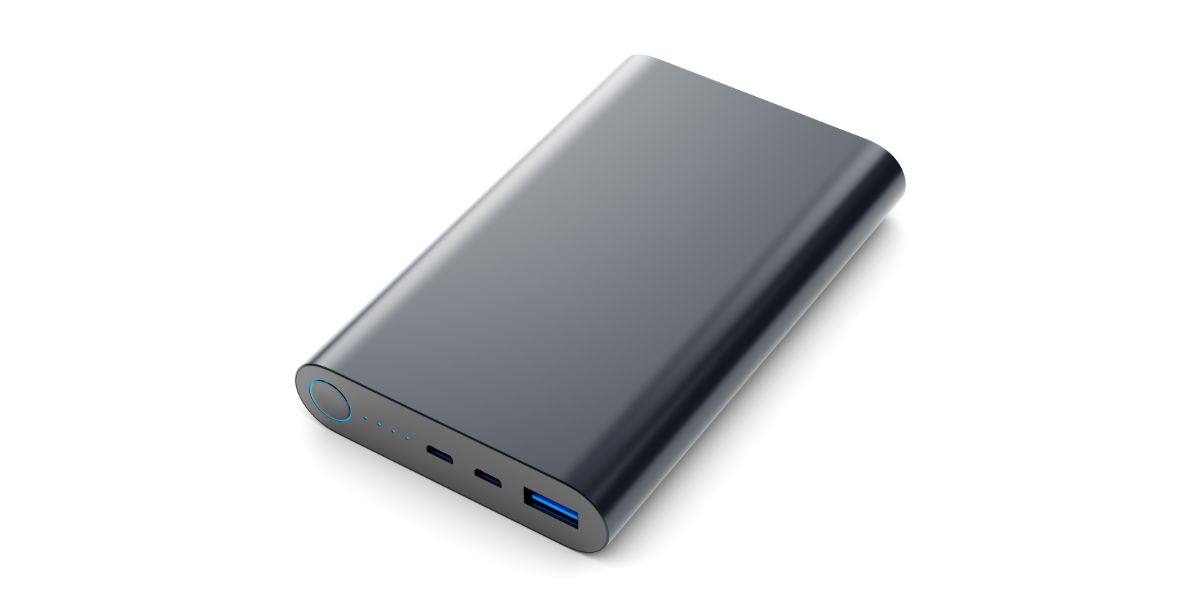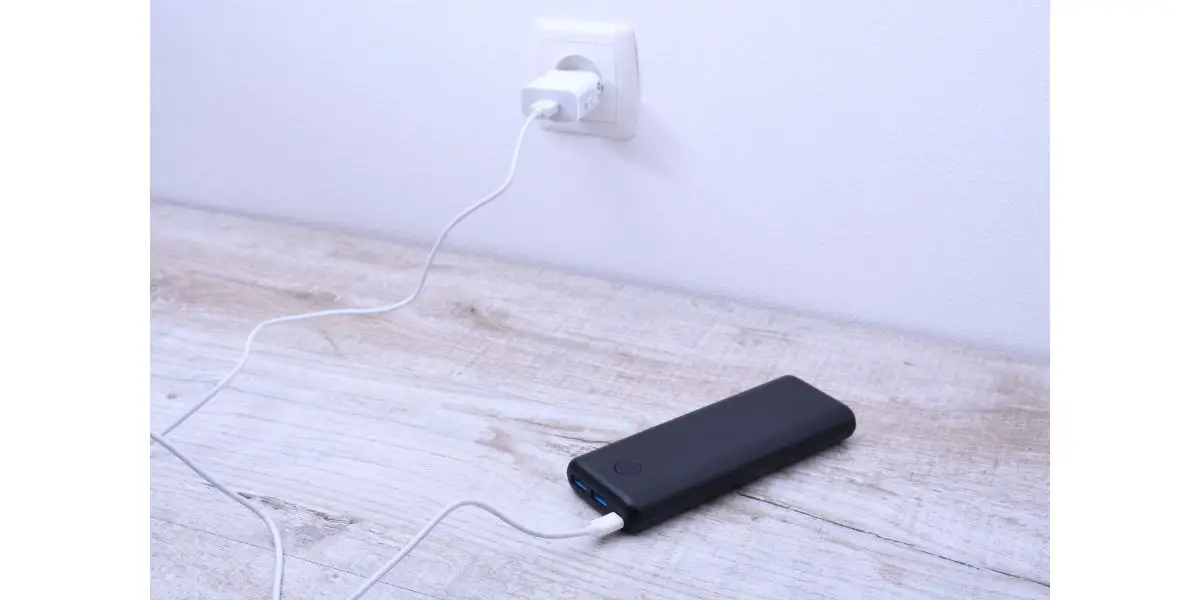Disclaimer: This post may contain affiliate links, meaning we get a small commission if you make a purchase through our links, at no cost to you. For more information, please visit our Disclaimer Page.
Nearly all the important tech devices that people use in their lives today run on batteries. They are also portable. You can bring them anywhere.Because of this, you need a power source to plug these devices in case they run out of charge when you’re on the go. Power banks solve that issue by acting as large battery reserves that you can take with you.
Power banks come in different shapes and sizes. Some are long or heavy, but the largest among them could even power a laptop computer.Like any battery, you need to charge up your power bank occasionally. There are some best practices for doing this effectively, and we’ll talk about some of the most common tips in our article today.
Table of Contents
1. Should I Charge My Power Bank to 100%?
Typically, any power bank you purchase from the manufacturer already has some battery charge. In almost all cases, this will not be a full charge. Many developers do not charge the batteries completely before shipment.
Even if they did so, the power bank would likely discharge some of its energy during transit until someone buys it. However, some users may wonder if they should charge theirs up completely, mainly if they have just purchased it.
Depending on the bank’s battery level, when you get it, you may wish to charge it up fully the first time you take it out of the box. However, this is not necessarily the standard you should use for it moving forward.
What you do with the power bank depends on the battery type inside. Most modern power banks will use a lithium-ion battery. Or at the very least, most have a lithium-based power source.
Because of the nature of lithium batteries, most people do not recommend charging or draining them fully. In other words, do not let the power bank drain completely and sit at a charge of zero. And don’t charge the power bank up to its full capacity.
Discussing the full inner workings of lithium batteries is a bit beyond the scope of our topic, but it is enough to say that they prefer to be close to the maximum capacity rather than at it.
If a power bank is at zero or full capacity, the battery inside it is operating under some stress. To ensure the maximum longevity of your power bank, allow it to drain up to 20% and charge up to 80%.
2. Is It Safe To Leave My Power Bank Charging Overnight?
In most cases, leaving your power bank charging overnight should be fine. Like many other batteries, modern power banks have built-in circuits that detect when they’ve reached the maximum charge. Once the battery is full, the circuit cuts the power source.
This is true even if the power bank remains plugged into a power source. If you leave your power bank like this overnight, its battery will slowly discharge. Once it does, the circuit will turn the power source back on to charge it again.
A possible exception to this rule might be very low-cost power banks. Power banks that use inferior parts. Such do not have the same safety circuits that reputable power banks have.
Without these mechanisms, the power bank could continue to charge up while plugged into an energy source. That makes a good recipe for destruction. It risks overcharging. That added stress can even cause the power bank to explode.
Since these power banks do not undergo a strict quality control process, they might have defective batteries, too. The capacities could also be much smaller than what they declare on the label.
Further, they may run out of charge cycles faster than they should, forcing you to replace them. The warranty for products like these may be questionable.
Save yourself the hassle by getting a decent-quality power bank. You should also choose from reputable brands for the best experience and protection.
3. Is It Okay To Leave a Power Bank Always Charging?
It is probably fine to leave the power bank plugged in when you are not using it. However, this may not be the best approach.
Although any good power bank cuts the power from its source when it is full, leaving it prevents it from discharging.
Doing so lets you constantly keep the power bank at one end of its spectrum, thus putting some strain on the battery that does not need to be there. Frequent, smaller charges could be better for your power bank than more infrequent maximum charges.
Further, leaving the power bank connected to a source is okay if you use it frequently. Using it to charge things that drain it faster might be better.
Power banks are for situations when you don’t have any power source options. However, if you are at home, you have access to the main power supply. Thus, charging your gadgets to the main power source rather than a power bank makes sense.
Additionally, using and charging it simultaneously could overheat the parts inside. While most power banks should shut off before they take any serious damage, it is best to take your power bank off the charger once in a while.
4. Can I Use My Power Bank While Charging It?
Sometimes, you can use a power bank while you’re charging it. It all depends on the power bank’s model and specifications. Most power banks should be able to charge your devices while charging themselves up from an outlet.
However, the overall efficiency of the power bank may decrease. In other words, it’s not practical to bother charging your device until you finish charging the power bank.
This limitation is due to how currents work as they flow through batteries. All batteries have particular ceilings for these currents. A power bank can still provide power to something, like your smartphone, while you are charging it. However, these processes do not occur precisely at the same time.
The power bank can either take the energy from its primary source or discharge some stored energy to charge your phone. If you want to charge a device and the power bank simultaneously, both will eventually reach full capacity.
There’s also the overheating issue because your power bank is working double time. Typically, it should be fine if the power bank only gets mildly warm during this process. However, if you feel it getting hot, you should stop charging the phone until the bank reaches its total capacity.
5. Why Do Power Banks Take So Long To Charge?
Power banks are batteries, but most are much larger than the ones you will find in many of your devices. They feature large capacities to accommodate devices with similarly large batteries.
Additionally, you can charge several smaller devices on a single cycle and still have energy left after. For the most part, power banks can take a long time to charge because they store a lot of energy simultaneously.
However, there are situations where charging takes a long time. It could mean that there is something wrong with the power bank. Check if the power adapter is delivering the correct voltage to the unit. Your main power source may not be delivering enough energy to the battery.
Similarly, you could have problems with the input on the power bank itself. If the device has trouble connecting, its power could be lower or slower than it should be.
Check the ports for debris or other problems. Also, check if the cable is in good condition and has no major bends or breaks. Exposing your power bank to extreme temperatures could also affect its ability to charge quickly.
6. Should I Drain My Power Bank Before Charging It?
Generally, you don’t need to drain your power bank before charging it. Depending on the charge level, you can start using them immediately or charge them first instead.
While there is no set rule, it’s okay to let the power bank’s battery level reach around 20% before you charge it. Draining it completely may be fine temporarily, but don’t leave it with an empty battery for long.
Conclusion
Power banks are simple accessories that can provide energy to your devices when you’re on the go. Generally, you only need to know what capacity you might need, and then you can purchase the type of unit that works for you.
Power bank owners should remember these extra tips when charging the battery. High-quality power banks protect against overcharging, but keeping your unit somewhere between its lowest and highest points is a good idea. Doing so can increase how many charging cycles you get out of it.


